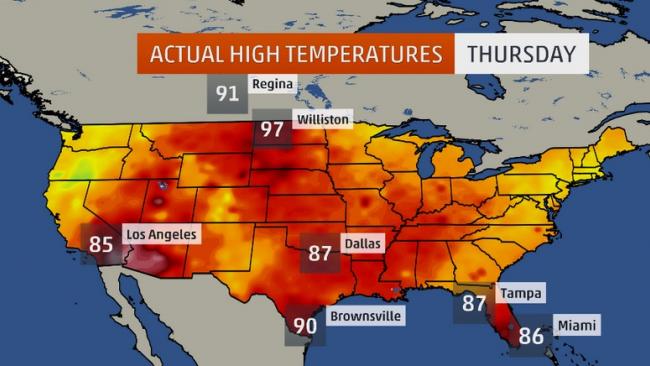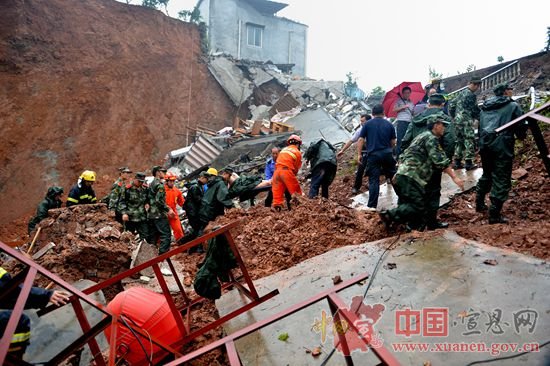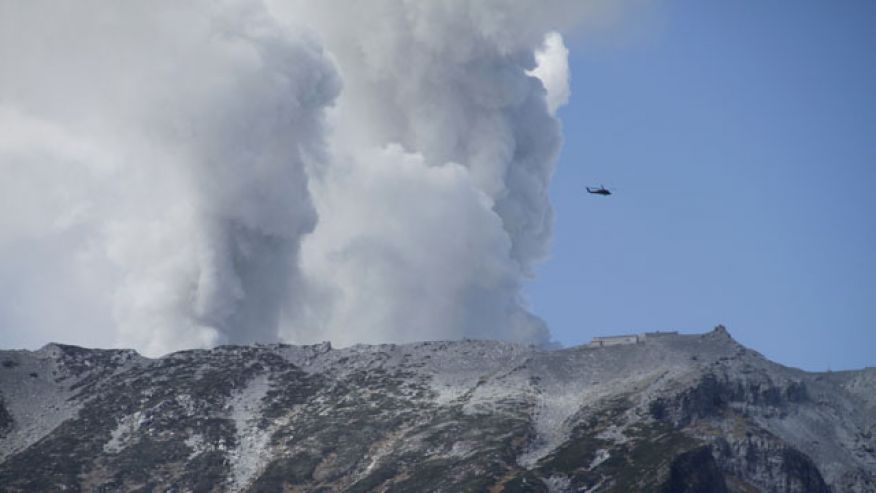
Actual high temperatures on Sept. 25, 2014.
When you think of 90-degree-plus record heat in late September, I'll bet Canada doesn't pop in your head first.
Contours of actual highs on Sept. 25, 2014 with record heat circled in Montana, North Dakota and southern Canada.
Highs Thursday soared into the 90s as far north as southern Saskatchewan and southern Manitoba, smashing daily temperature records.
Estevan, Saskatchewan topped out just under 94 degrees. The provincial capital of Regina had its warmest day of the year (91.6 degrees F or 33.1 degrees C). Eight other Canadian cities soared above 90 degrees in Saskatchewan and Manitoba.
Record highs were set as far north as Thompson, Manitoba (79.7F or 26.5C), just under 500 miles north of Winnipeg.
South of the border, both Williston, North Dakota, and Miles City, Montana (97), sweated through their record hottest day so late in the season, according to weather historian
Christopher Burt and senior meteorologist
Stu Ostro.
Rapid City, South Dakota (92),
reached the 90s two weeks after their earliest snowfall on record.



Comment: The sinkhole phenomena has roughly been in exponential growth the latest years and 'death by sinkhole' has been on the rise too. None of the usually invoked causes are able to explain the sudden rise of sinkholes in so many different locations, so in all probability, while considering the electric nature of our cosmic neighborhood and its link to seismic and meteorological change, the phenomena relates to a grander change in solar system conductivity. Consider how reduced solar activity may influence the spin of our globe and the stresses that may cause through changes in surface-core E-field, specifically the crust (Lithosphere).
Read more about the grander 'circuit board' of our electrochemical neighborhood, in:
Earth Changes and the Human-Cosmic Connection